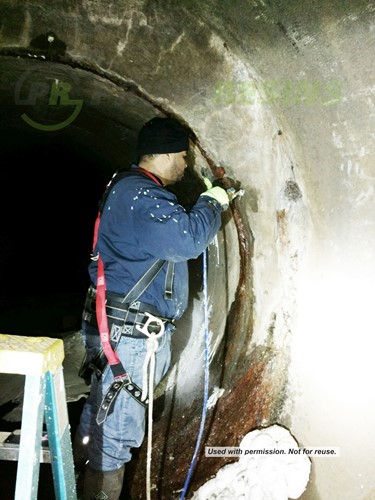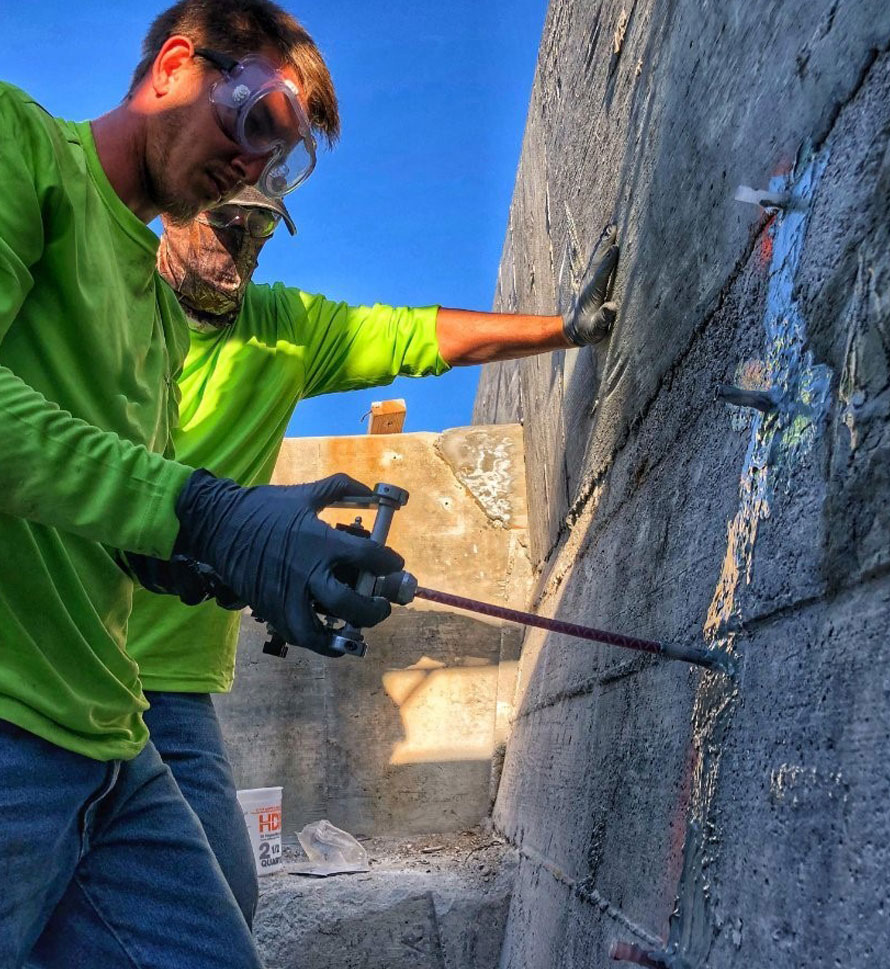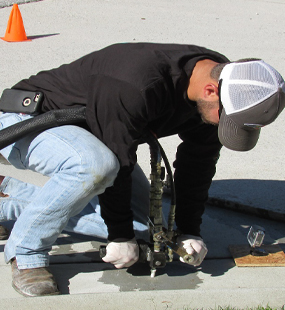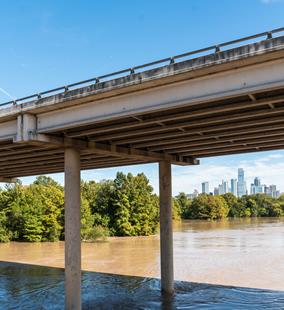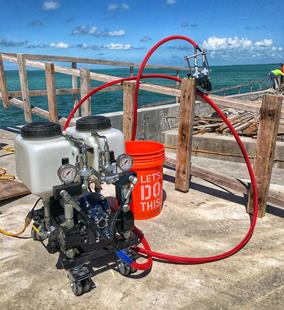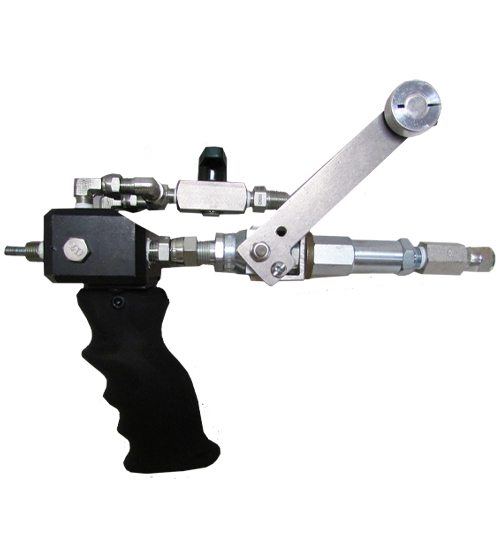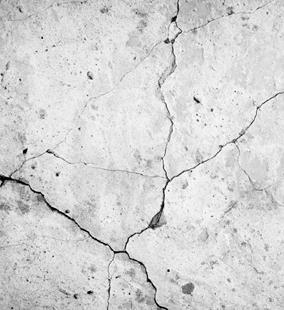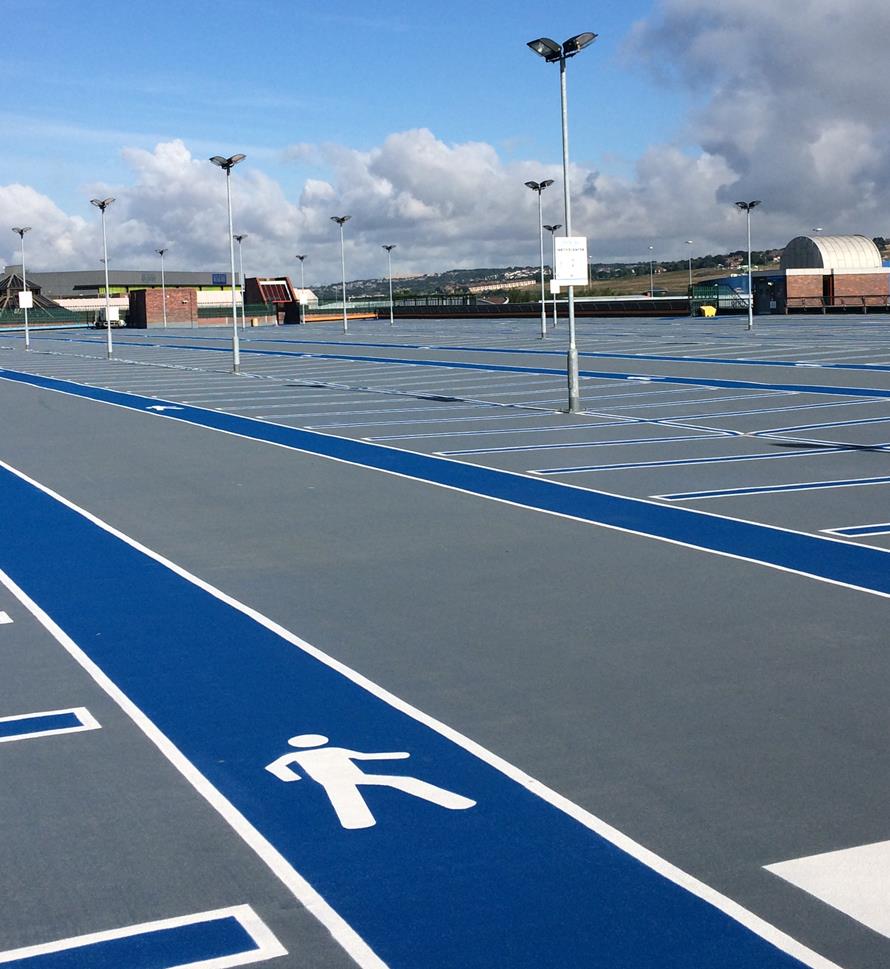
- Home
-
Solutions
-
Leak Seal
Seal leaks in concrete or masonry with crack injection and curtain grouting of our Prime Flex polyurethanes and AR acrylate resins. Prime Resins offers superior solutions for stopping leaks in every type of environment.
Read More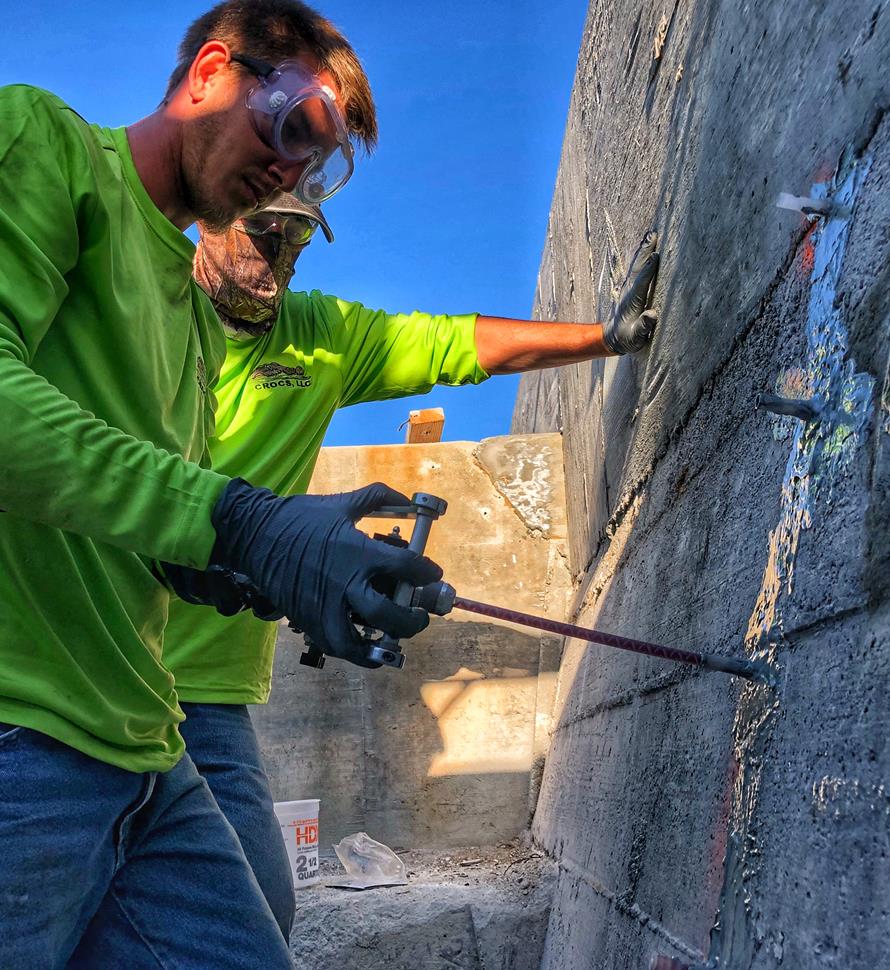
-
Soil Stabilization
Sound concrete relies on a sound substrate. Stabilize soils and fill voids with our polyurethane and acrylate foams and gels. We make chemical grouts for permeation and compaction grouting in wet and dry conditions.
Read More
-
Slab Lifting & Stabilization
Slab lifting and slab stabilization with polyurethane foams offers many advantages over traditional mudjacking. Only Precision Lift is engineered to tackle underlying issues and slab lifting with precise, dependable results.
Read More
-
Floor Repair & Joint Protection
Spalled concrete is concrete that is chipped, cracked and deteriorating. This often happens at a joint.
Read More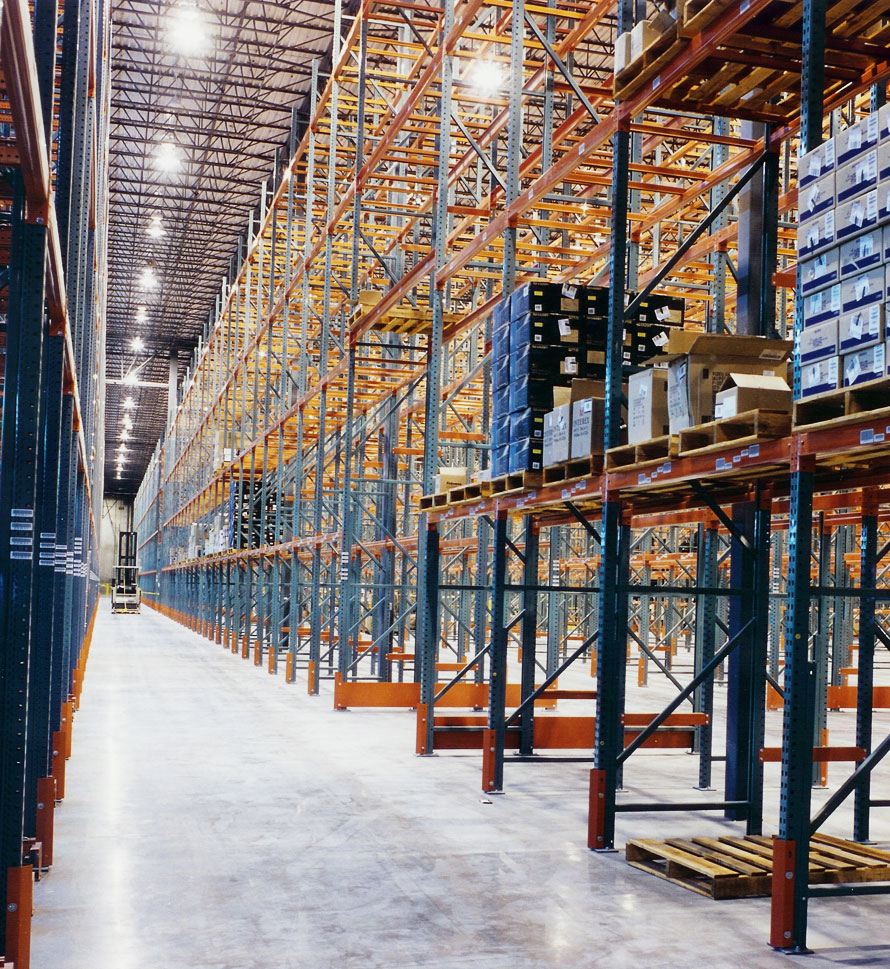
-
Seawall Repair
You can repair a seawall or bulkhead with Prime Resins chemical grouts: fill voids, stabilize loose soil and seal leaks at a fraction of the cost of wall replacement.
Read More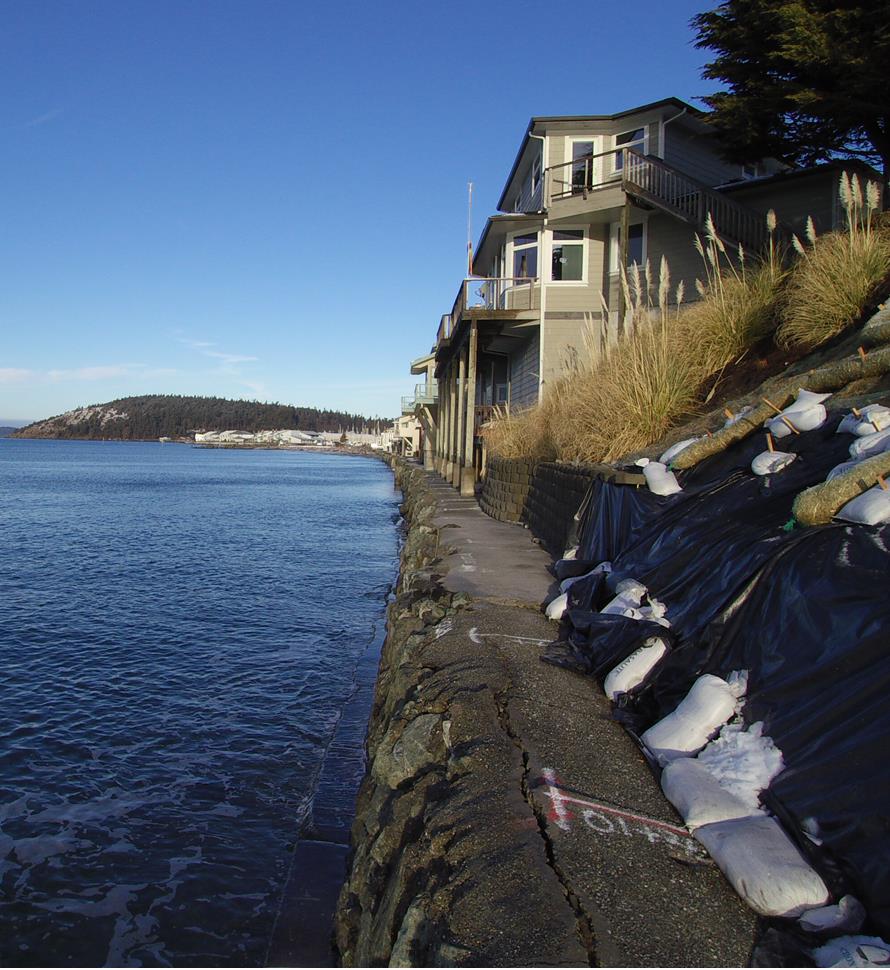
-
Structural Repair / Bonding & Anchoring
The need for crack repair in concrete structures can be caused by many different factors. Damage can occur to the concrete in situations where direct impact puts stress on one area of the structure.
Read More
-
Highway & Bridge
The geotechnical needs of DOTs and other agencies responsible for roads and bridges are vast. Issues include: Culvert repair Soil stabilization Void filling Concrete slab lifting Sinkhole remediation Slope control Slough control in tunneling
Read More
-
Waterproofing & Secondary Containment
Protecting concrete usually means shielding it from the elements of nature or from harsh manmade chemicals. But it’s not just concrete that needs such protection. Corrugated metal pipe, steel surfaces, material hoppers, rail cars and masonry all can come in contact with corrosive or abrasive materials or harsh conditions.
Read More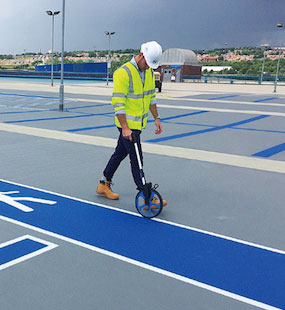
-
Leak Seal
-
Products
- Leak Repair
-
Soil Improvement
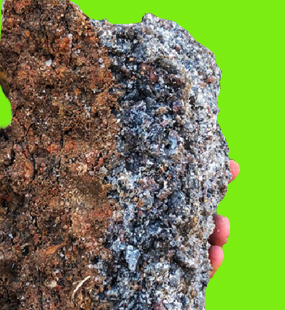
- Soil Stabilization
- Slab Lifting
- Structural Repair / Bonding & Anchoring
- Pumps
- Dispense Guns & Applicators
-
Turnkey Trailer Rig
Are you ready to hit the ground running doing concrete leveling with polyurethane foam? Prime Resins offers the industry’s best suite of products for lifting concrete as a turnkey, fully equipped trailer rig.
Read More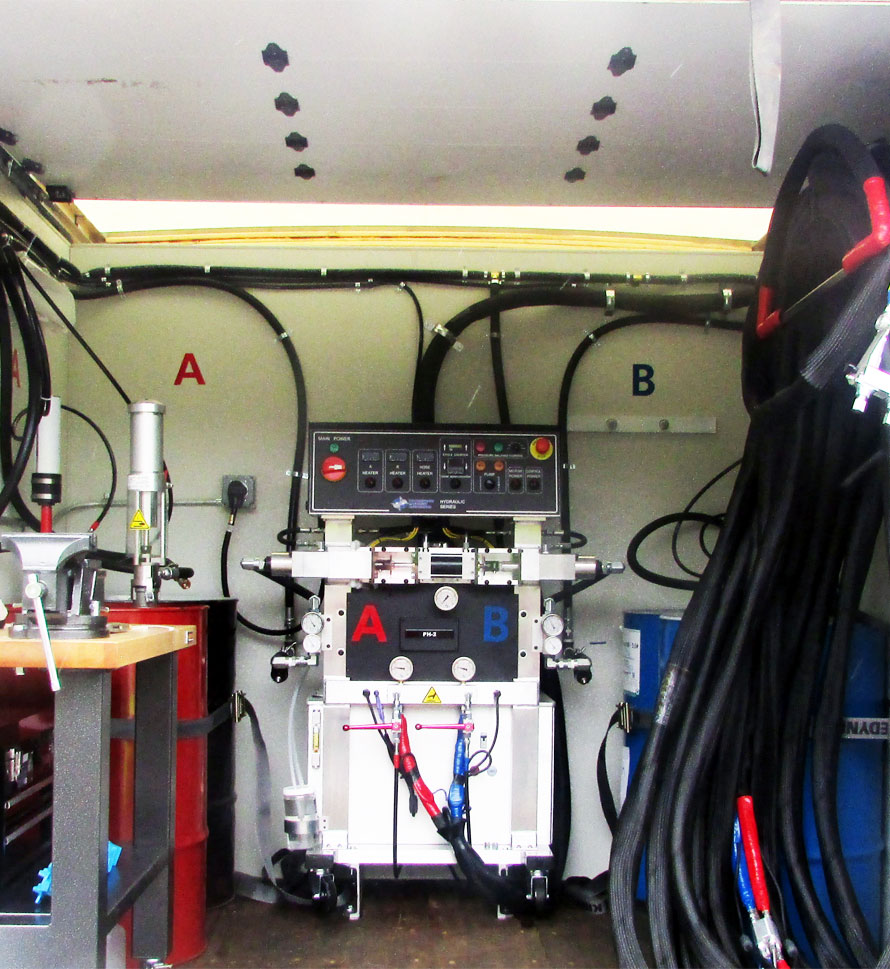
-
Accessories (General)
- 3/4" expendable drive point
- 3/8" and 3/4" soil probes
- Cartridge / Port Connectors and Mixers
- Conduit Seal Kit
- Eco Flush
- F Valve
- Flush Wand
- Grout Needle Kit
- High Pressure Control Valve
- High Pressure Mechanical Ports
- Kick Fast
- Low Pressure Plastic Ports
- PR11 TEA (used w/ PR10 ACLM)
- PR12 APSF catalyst (used w/ PR10 ACLM)
- PR17 LYTX
- Prime Kat
- Prime Plug
- Prime Solvent CGC
- Oakum
- Soil pipe jack
- Stainless Steel Grout Needle & Kit
- StainShield
- Wall Stinger Nozzle
-
Soil Grouting Accessories
- Pipe Coupler
- Pipe Coupler Ferrule
- Buttonhead Coupler - Straight
- Buttonhead Fittings
- SG 3/4" Expendable Drive Tip
- SG 3/4 Rod - 39" Base
- SG 3/4 Rod - 39" Connector
- SG 3/4 Rod - 19.5" Base
- SG 3/4 Rod - 19.5" Connector
- SG 3/4 Fitting - Pipe to Buttonhead
- SG 3/4 Fitting - Buttonhead Fitting
- IL 1/2" Drive Point
- IL 1/2" rod - 39" base
- IL 1/2" rod - 39" connector
- IL 1/2" Fitting Buttonhead
- SG 3/4" Fitting - Buttonhead Coupler
- SG 3/4" Slotted Drive Tip
- SG 3/4 Drive Head
- Modified Pipe Jack Soil Grouting
- SG 3/4 Fitting - Buttonhead Coupler
- Pagani DPM30 Penetrometer
- IL 1/2" Fitting - Buttonhead to Connector Rod
- IL 1/2" Rod to Rod Coupler Fitting
- High Pressure Flow Control Valve
- Buttonhead Coupler - 90°
- Buttonhead Clamp Kit
- DPM30 Penetrometers
- Floor & Joint Repair
- Waterproofing & Secondary Containment
- News
- Downloads
-
Tools
-
Case Studies
Prime Resins takes pride in its ability to find the right solutions to the problems facing our customers. Here are some examples of customers’ successful jobs:
Read More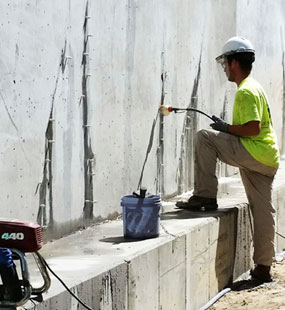
-
Prime Practices
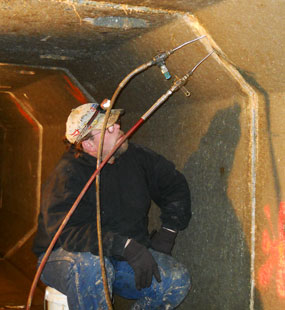
-
Videos

-
Estimating Tools & Info.

-
Why us?
The superior quality of products at a fair price, our consultative approach, and our unparalleled technical support set Prime Resins apart. Learn more about the Prime difference.
Read More
-
Product Types & Typical Uses
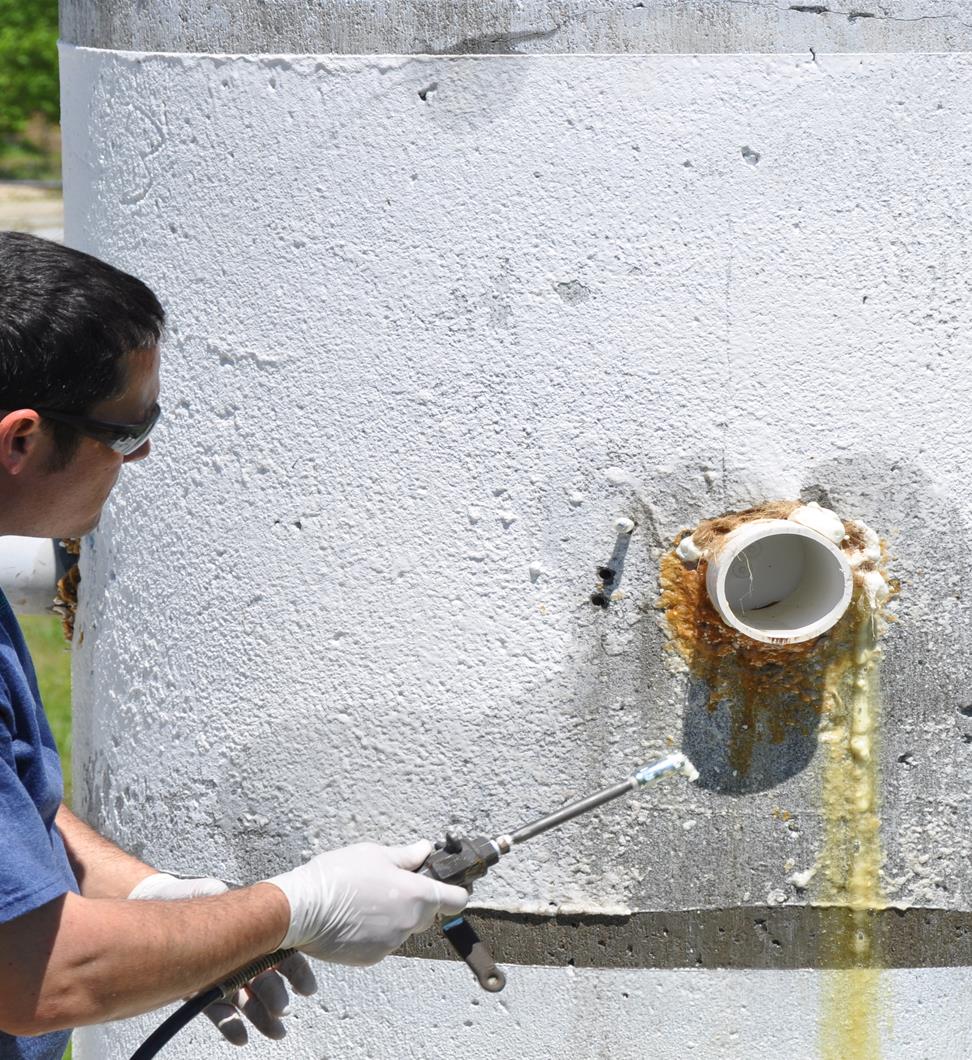
-
Looking for a contractor?
-
Certifications
-
Case Studies
- Contact
Case Studies- Leak Seal Pages
Sealing stormwater pipes at a Midwest airport
Client: Regional airport authority in the U.S. Midwest
Problem:
A regional airport in the Midwest has miles of pipe and storm sewers that stretch under the runways. These pipes carry surface runoff from rain events into the storm sewers. The airport sits near the Missouri River, in the river bottom, so the water table is extremely high. Cracks and leaking joints caused erosion around the pipes during major rain events. Eventually, the erosion would compromise the runways, potentially leading to sinkholes. The exfiltration had to be stopped.

Solution:
The contractor, who also does mudjacking, proposed curtain grouting the pipes with Prime Flex 920, a highly expansive structural polyurethane foam. When cured, the hydrophobic material forms a water-tight rigid mass, sealing leaks in the concrete pipes.
Foam vs Cement
The airport authority requested a mudjacking approach, but the contractor proposed polyurethane as a better alternative.
“A few years ago I did a similar project using my mudjacking equipment, but the hydrostatic pressure prevented our ability to pump the material. Pressure against pressure meant you couldn’t pump anything. Also, given the length of the stormwater pipes, the weight of the pumping pipes filled with concrete slurry make it impractical. The 920 is water-activated, so it was a much better permanent fix than what they originally hired us to do.”
He did a demo for the engineers, showing how 920 worked. In addition, the airport authority does video inspections yearly of pipes that the contractor grouted four to five years ago with 20-30 gallons of Prime Flex 920. There are no leaks.
The result? “Now this is all they spec,” says the contractor.
Outcome:
The crew pumped 700-800 gallons of Prime Flex 920 to encapsulate several leaks. “We sealed everything 100% and they were happy with it.”
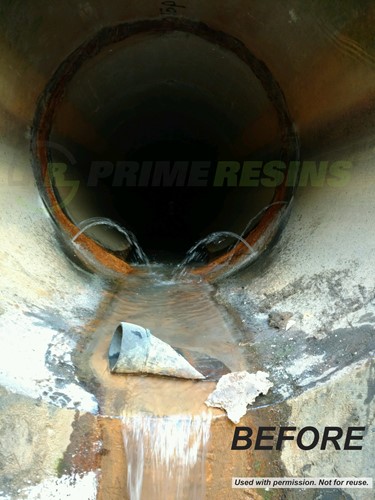
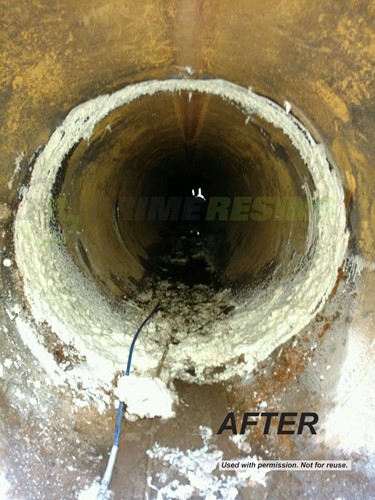
Challenges:
The project was pretty standard, so the crew didn't have to tackle any major obstacles. Some voids were larger than expected, which had a budget impact but were not a problem from an execution standpoint.
Alternatives:
Replacement was the only other true option, according to the contractor since he ruled out cementitious grouting given the hydrostatic pressure and the distance the material had to be pumped. Replacement would have cost millions of dollars plus lost revenue and productivity from runway shutdowns.
“I wish more people understood how good this product works. This is right next to the Missouri River. Mud would not have been able to flow far enough and would have been washed away. The 920 won’t get washed away. The beneficial cost of using chemical grout compared with replacement is probably what many engineers and property owners don’t know.
